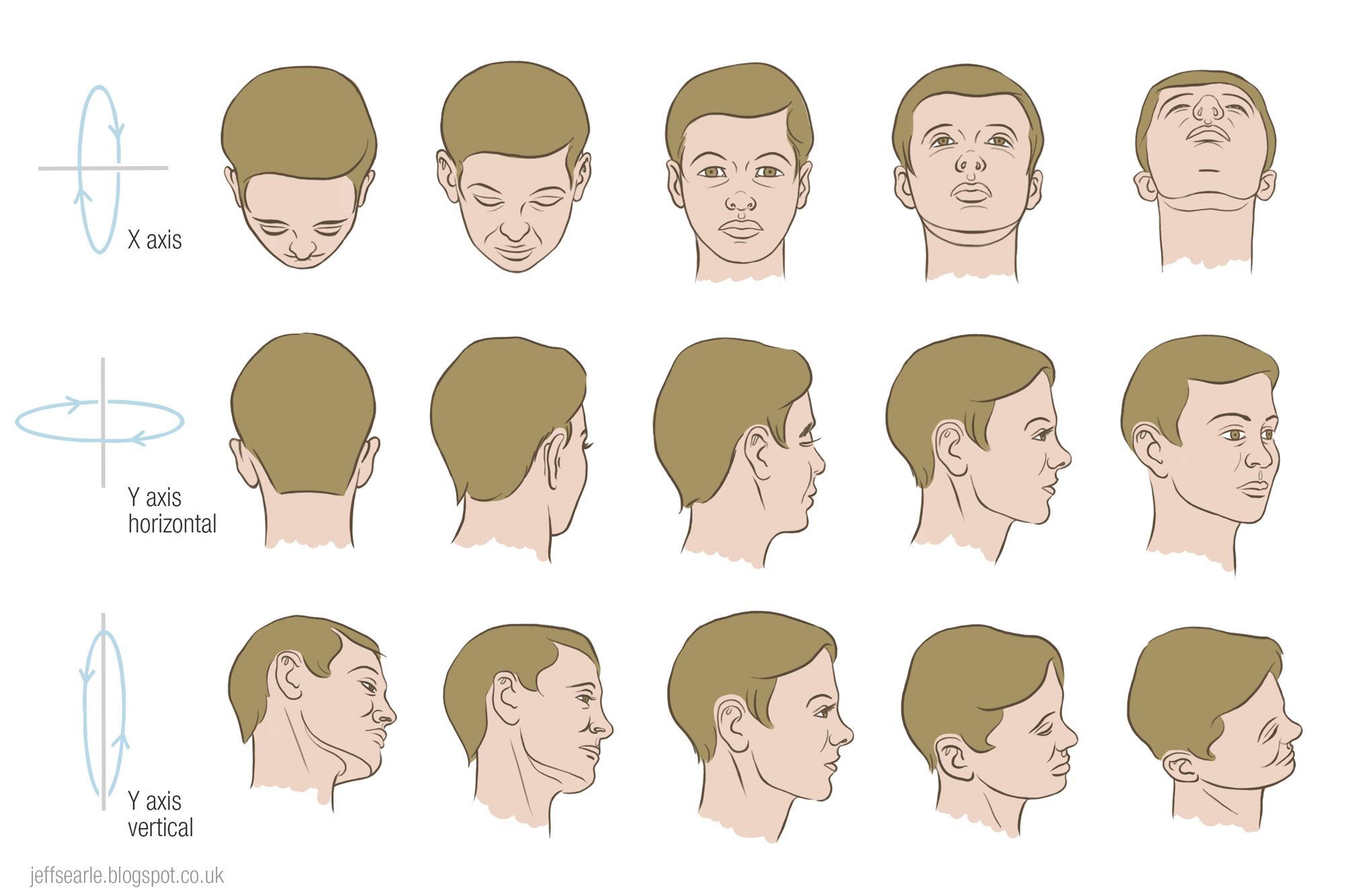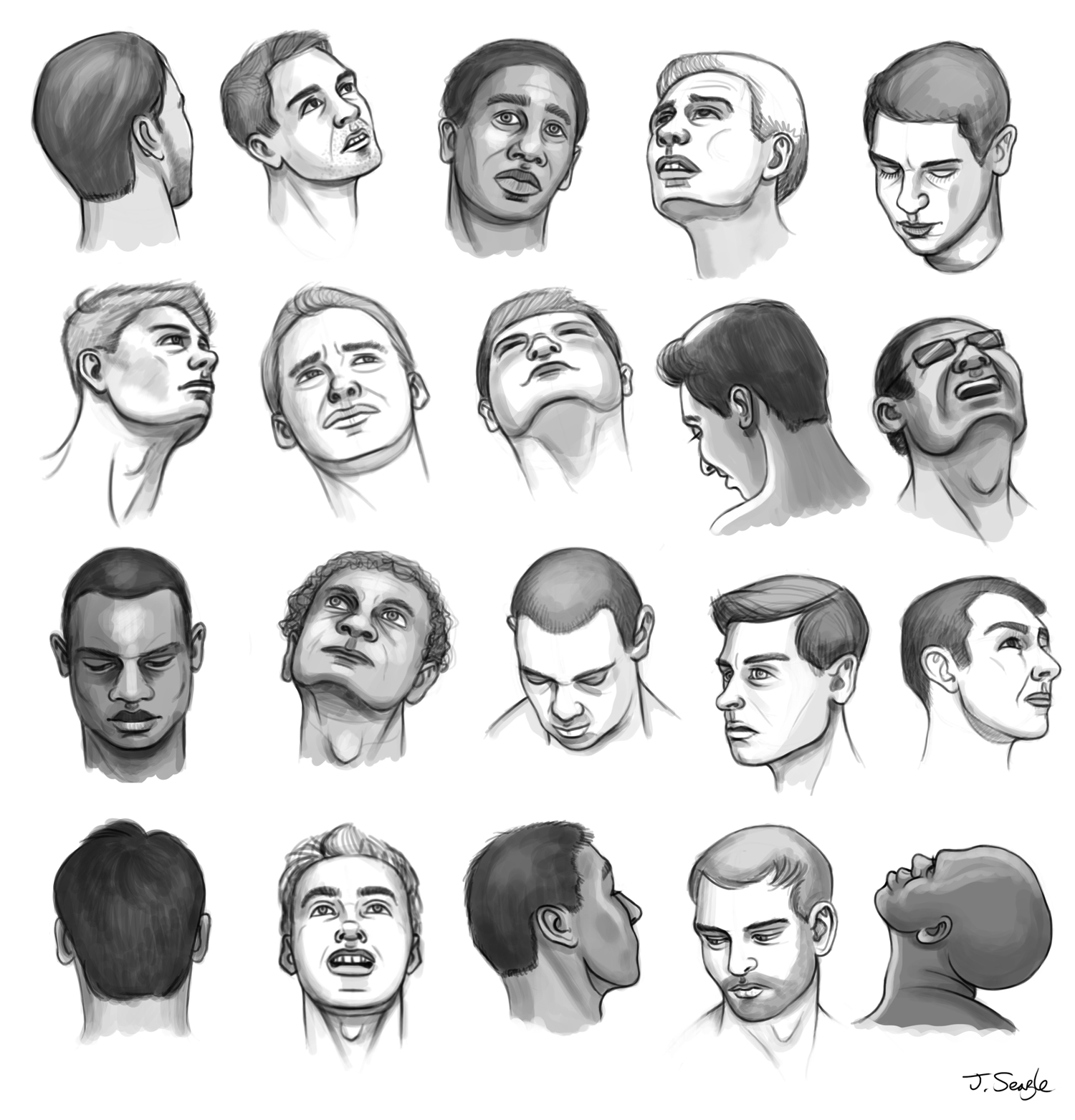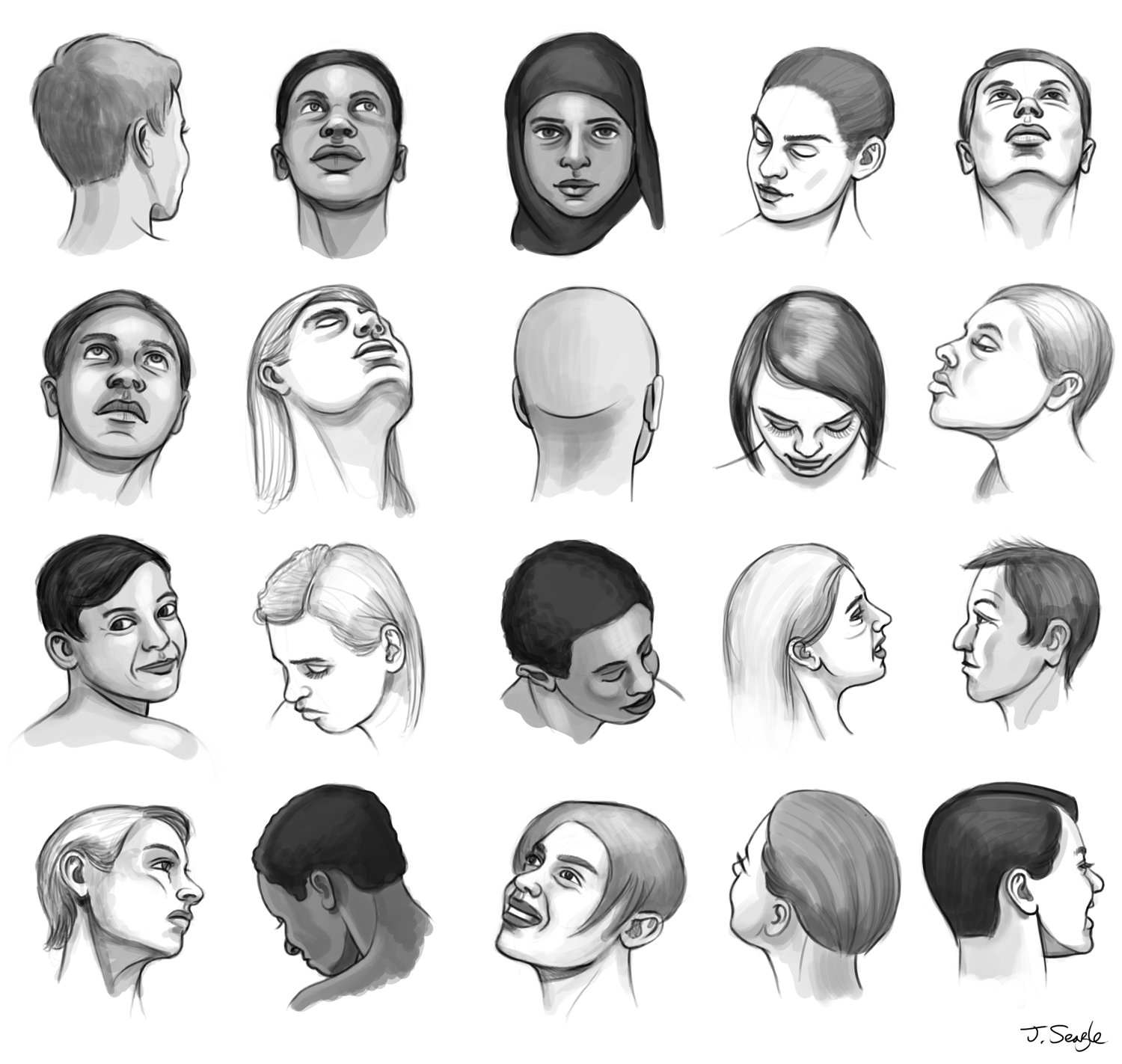how to draw head tilted up
Nosotros have looked at constructing the human head from a few unproblematic angles. In existent life, of grade, we rarely run across people's heads direct facing u.s.a. or in perfect profile. The heads of existent, living people are mobile and expressive – they tilt upwards, downward, or to the side, moving relatively independently of the body. The diagrams in art books have their place, only rules of thumb like 'the ears reach from the eyebrows to the bottom of the nose' are useless for almost every caput you lot will actually see. And then, if the subject is in front of us, nosotros have to rely upon our eye. If we are cartoon from imagination, nosotros accept to rely upon a expert familiarity with what heads expect like from different angles.
In the blogpost on Drawing the Simple Head we started with a solid, three-dimensional grade, a sphere, and drew measuring lines on it to help the states identify and relate the features. This is a more detailed look at the same matter.
How the features change
In the diagram below I take fatigued some examples of how the features change their appearance as the head moves through various positions.
Past the way, we'll discuss the muscles and forms of the neck separately. For now, recall of the neck as a cylinder below an egg-shaped head. It is a flake lower in the front than at the back.

Top row: Nosotros see the caput shifting from existence angled down to being angled up. See how in the first stage the eyes become obscured under the forehead, and the rima oris under the olfactory organ. The position of the ears is very helpful: equally the head looks down they rise above the browline, and as the head looks up they fall beneath the level of the mouth. Annotation also the importance of that actress airplane under the jaw, between the chin and the neck.
Eye row: The caput turns from the dorsum toward the front, gradually revealing more of the features.
Bottom row: A rotating side view of the caput. As before, the ear is a particularly proficient indicator of what'southward going on.
Below I take included a further diagram illustrating how the appearance of the head changes. I found this online and have no idea where it is from, otherwise I would provide a credit – but I wanted to share information technology as it's a great illustration. Observe the contour line that runs down the front of the face, and meet how it runs over the features, extending out along the nose, turning dorsum in underneath, curving over the lips, and down the cervix. Not only is this a guide to the direction the head is pointing, information technology models the head equally it goes, reminding you that all these features have their own forms, their ain solidity, their own depth or extension in relation to ane another. Fifty-fifty an experienced artist, though he or she doesn't ordinarily bother to draw guidelines over everything, is on some level imagining the line is there.

You lot should study this and copy each angle shown. Just of grade, that isn't enough. You lot need to draw as many existent people'south heads as you can. Hundreds of heads, from every direction. Don't forget to look from behind, as well. Detect photos of people on the internet and make drawings from them – past eye, no tracing! They don't take to be detailed, polished drawings. The purpose for now is to learn the placings and proportions.
The jaw
Pay detail attention to the changing shape of the jaw every bit the head moves around. You can see from the analogy above that when we look downward the jaw converges into a triangular shape. When we move head upwards, the tip of the chin draws level with the bending of the jaw. And when we tilt the head up further nevertheless, we see a distinct airplane where the bottom of the head meets the cylinder of the neck.
Perspective
Nosotros all know that objects go smaller every bit they get further away. This applies to the nearest and farthest parts of the same object, also. In the analogy beneath, notation how the length of the book gets shorter as it recedes into space, and how the far border becomes shorter than the about edge:

We observe it easier to imagine a box in perspective than something as awkward equally the human caput. Then recall of the head as a kind of box. As the head turns abroad from us, it volition recede into space and the distances will abound shorter.
Using the divided ball and plane method, we divide the head into thirds to aid us identify the features. In perspective, the lengths of the thirds will get progressively smaller as they recede, i.e. towards the bottom of a caput tilted down, or the elevation of a caput tilted upward.

Now describe heads
Remember, humanity is diverse, then please don't reproduce the same confront countless times over. Await for a variety of age, sex, race, mass, etc, because your work will be richer for information technology.
Below are a couple of sheets of heads that I drew for this do: not polished masterpieces, just sketches done adequately rapidly to try and capture certain angles. You should probably be more audacious than I was here. You lot larn a lot doing extreme angles.


Source: https://jeffsearle.blogspot.com/2015/09/drawing-head-from-different-angles.html
Posted by: hiserotile1968.blogspot.com


0 Response to "how to draw head tilted up"
Post a Comment